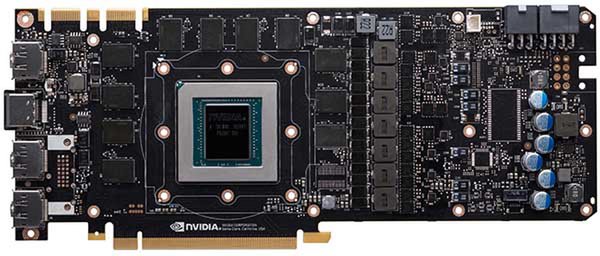Before the price announcement of Nvidia's Jen-Hsun on the big stage in San Francisco, there were a lot of discussions in the Tom's hardware team, where the GeForce GTX 1080 Ti would probably be priced. 800 dollars sounded almost too cheap; 900 dollars seemed more than reasonable due to the theoretical similarity to the 1200 dollar Titan X (Pascal). But none of us expected the GTX 1080 Ti to hit the market for 700 dollars, completely replacing the GTX 1080.
Why not? There are a number of reasons for this.
A 700-dollar GeForce GTX 1080 Ti makes the 1200-dollar Titan X look silly. After all, the only real advantage of titan X is its additional gigabyte of GDDR5X storage. Ergo must either remove the card from the market or become significantly cheaper. Since Nvidia only sells the Titan X through its own website, control over the fate of the card is in Nvidia's hands – implementing the chosen solution should be easy. And finally, there is still the GP100 GPU with its 3840 cores, if there is a need for an even thicker titanium card…
Then there is the fact that the GTX 1080 Ti effectively completely replaces the normal GTX 1080 – after all, both have the same price point. This is great news for gamers who didn't switch at last year's launch of the GTX 1080/1070. But if you bought a GTX 1080 Founders Edition a few weeks before the GDC, you're probably going to roll over the back-to-back and exchange documents.
Even Oculus knew there would be trouble with the clientele after announcing their 600-dollar Rift/Touch package. Consequently, the company put 50 dollars of compensation into our store account, as we had registered our touch controller within 30 days before the GDC. But Nvidia says it has no plans to do anything similar.

Gamers who were previously hesitant to purchase a high-end graphics card now have enormous performance at a price point that we simply wouldn't have thought possible. In a nutshell, the GTX 1080 Ti is a Titan X for the price of a GTX 1080 Founders Edition. Does Nvidia know anything about AMD's upcoming flagship that no one else knows, and has that's why he chose such an aggressive price point? Maybe. But secrets don't last long in this industry anyway.
At the beginning of the GeForce GTX 1080 Ti was certainly the question of what Nvidia can do with GP102 GPUs where a ROP or memory controller is defective. The result was a map that allows smooth 4K/UHD gameplay – even with maximized detail in many games. Who prefers 1440p (e.g. on a really fast gaming or G-Sync monitor), will have no problems. We have VR titles in the test lab that will cause a GTX 1070 to despair and will soon overwhelm a GTX 1080. Something like a GTX 1080 Ti is needed if you want to achieve a constant 90 Hz.
Of course, Nvidias will handle this launch differently from that of titan X. Board partners, for example, will be able to develop their own custom design. By the way, the 700-dollar price point applies to both the Founders Edition and The Board Partner models. And while there will certainly be premium models at higher prices, we expect Nvidia's version to keep most of the cards in check, and there won't be the massive inflation that the first Pascal cards faced last summer. Had.
When a price point is announced in a room full of experienced testers, where everyone looks at each other and mutters "Wow!" then you almost certainly know that this product will be a success. The GeForce GTX 1080 Ti delivers a performance that you might have expected – but not at the price that surprised us all.
In doing so, the newcomer also exerts massive pressure on the old guard. Geforce GTX 1080 cards go online for as little as 500 euros and cost "only" 635 euros on the Nvidia page as Founders Edition, while the new GTX 1080 Ti is priced out at 819 euros. GeForce GTX 1070 cards haven't gotten cheaper yet, but that could happen very quickly if AMD's Radeon RX Vega appears.
Oh, Vega. We've heard so much about what AMD's flagship next generation has in it. And yet we are still waiting for tangible proof of what it all has on it. It's hard to imagine a scenario in which AMD's Radeon RX Vega offers noticeably more performance per euro than what we've just tested. But we wouldn't be unhappy if AMD taught us something better. Really. Come on, AMD!
































Kommentieren